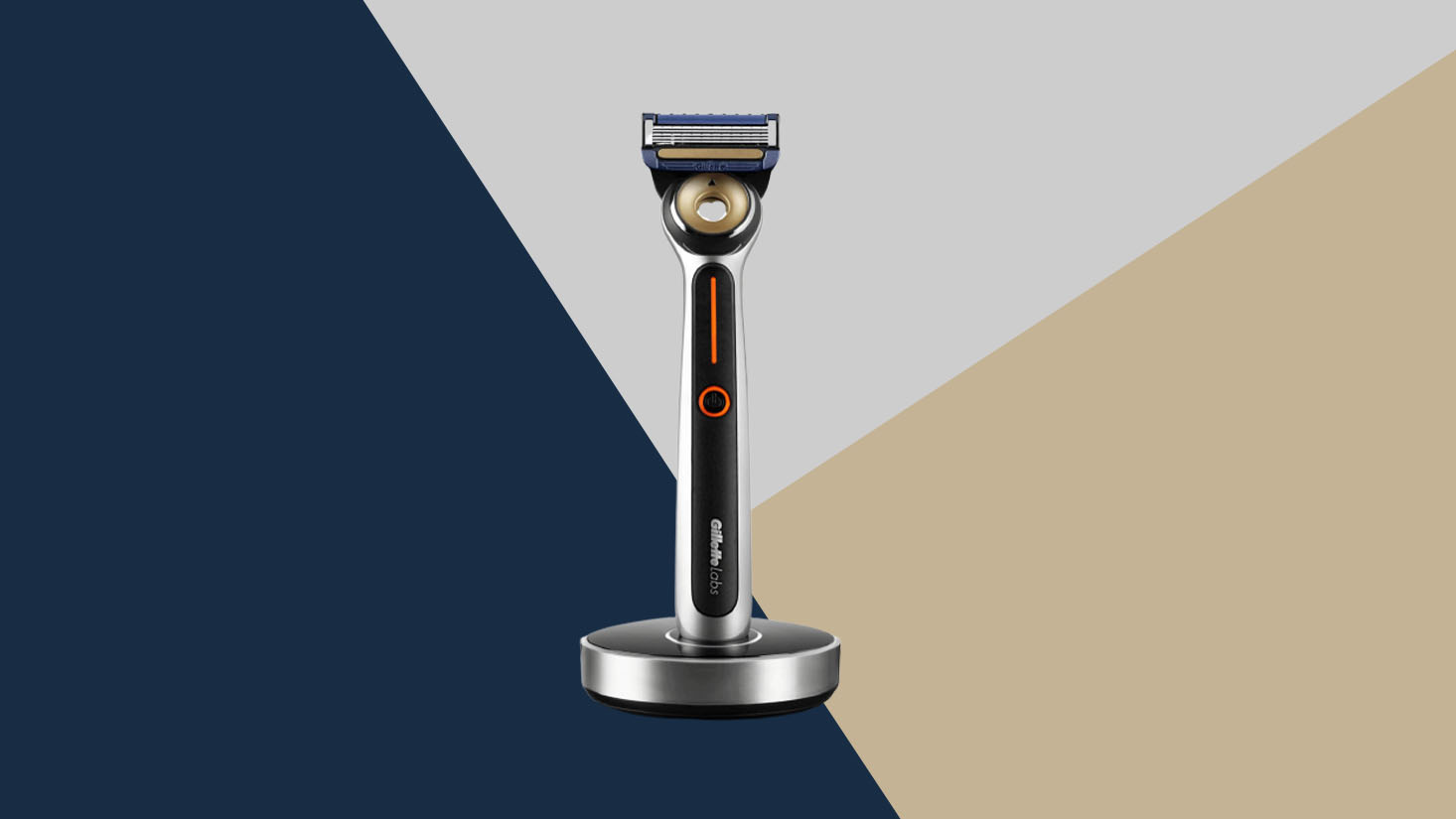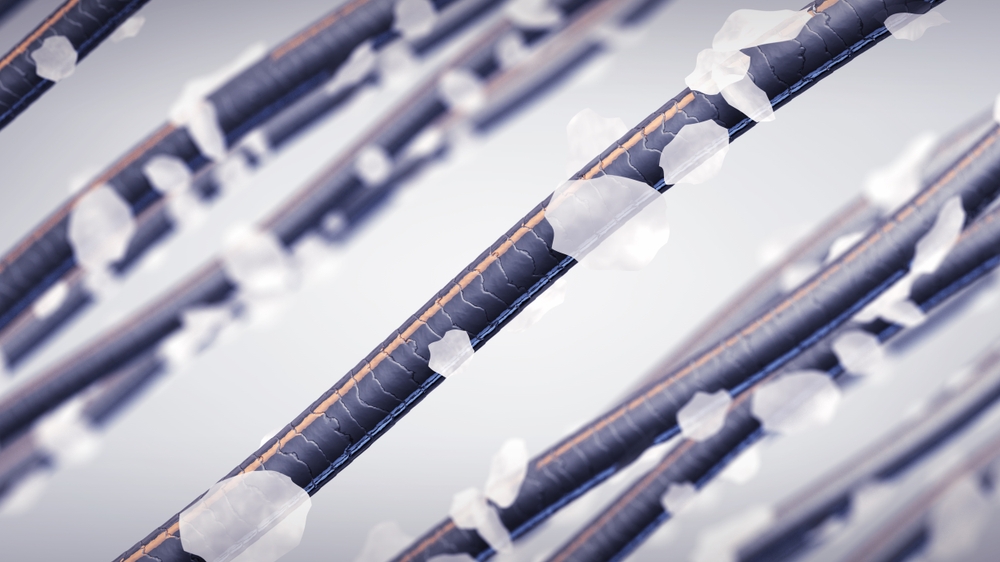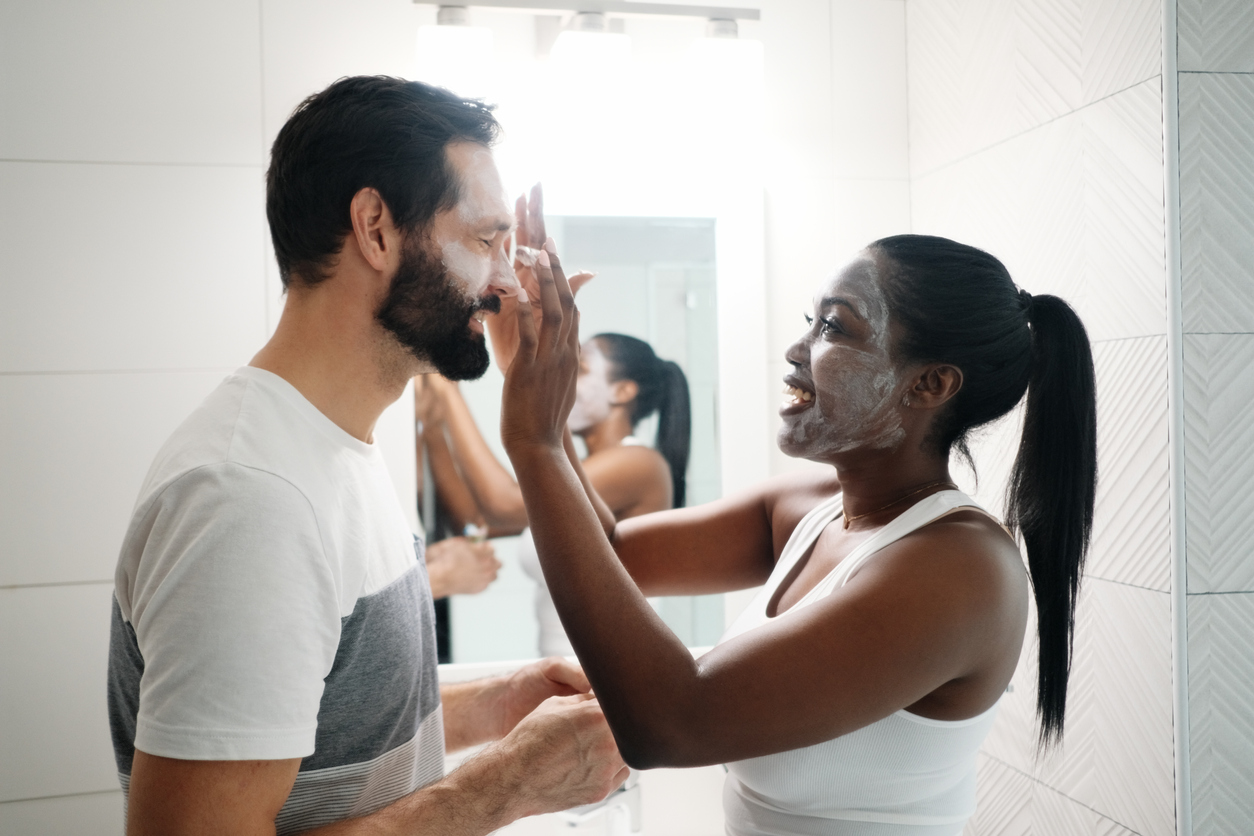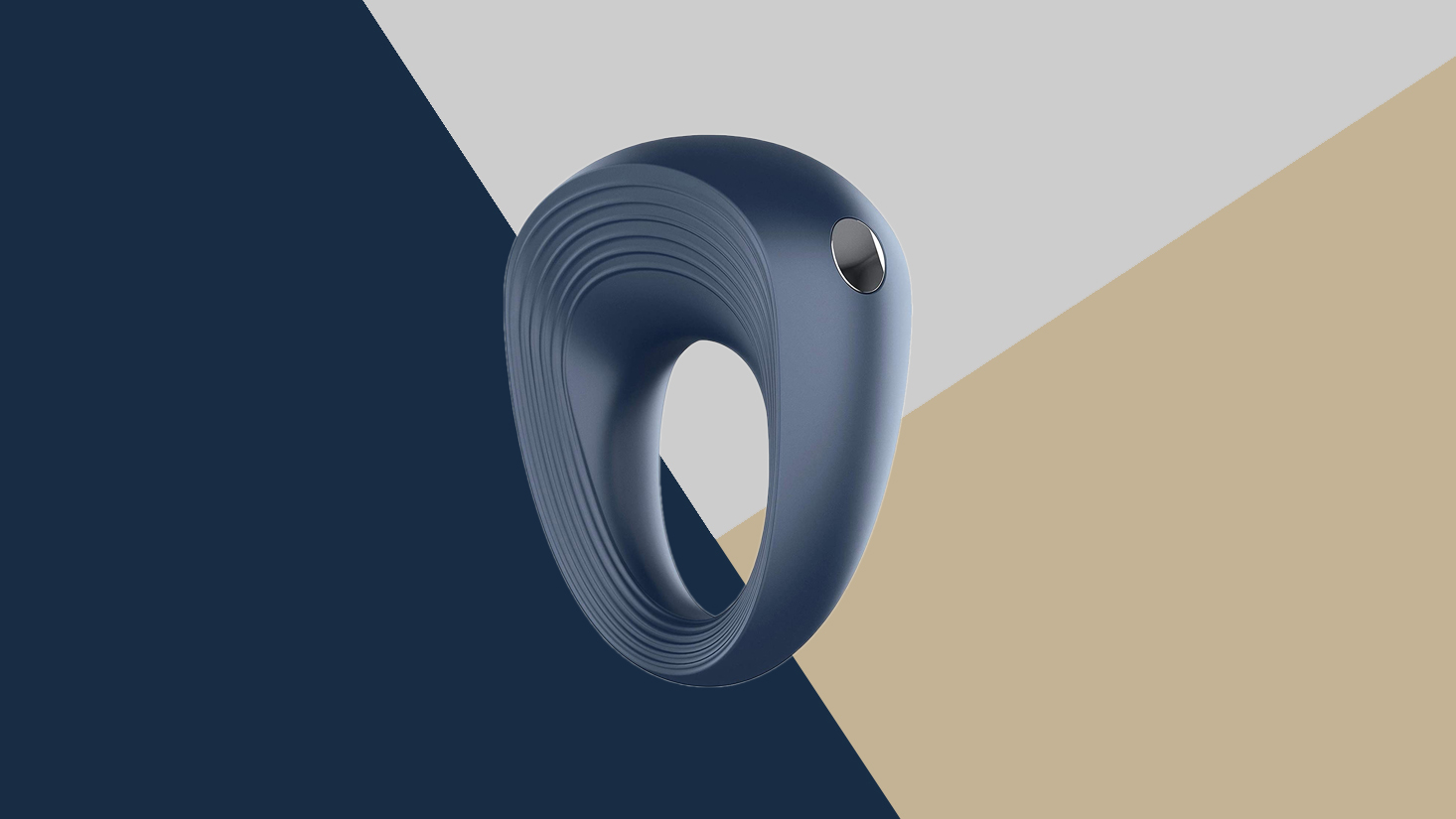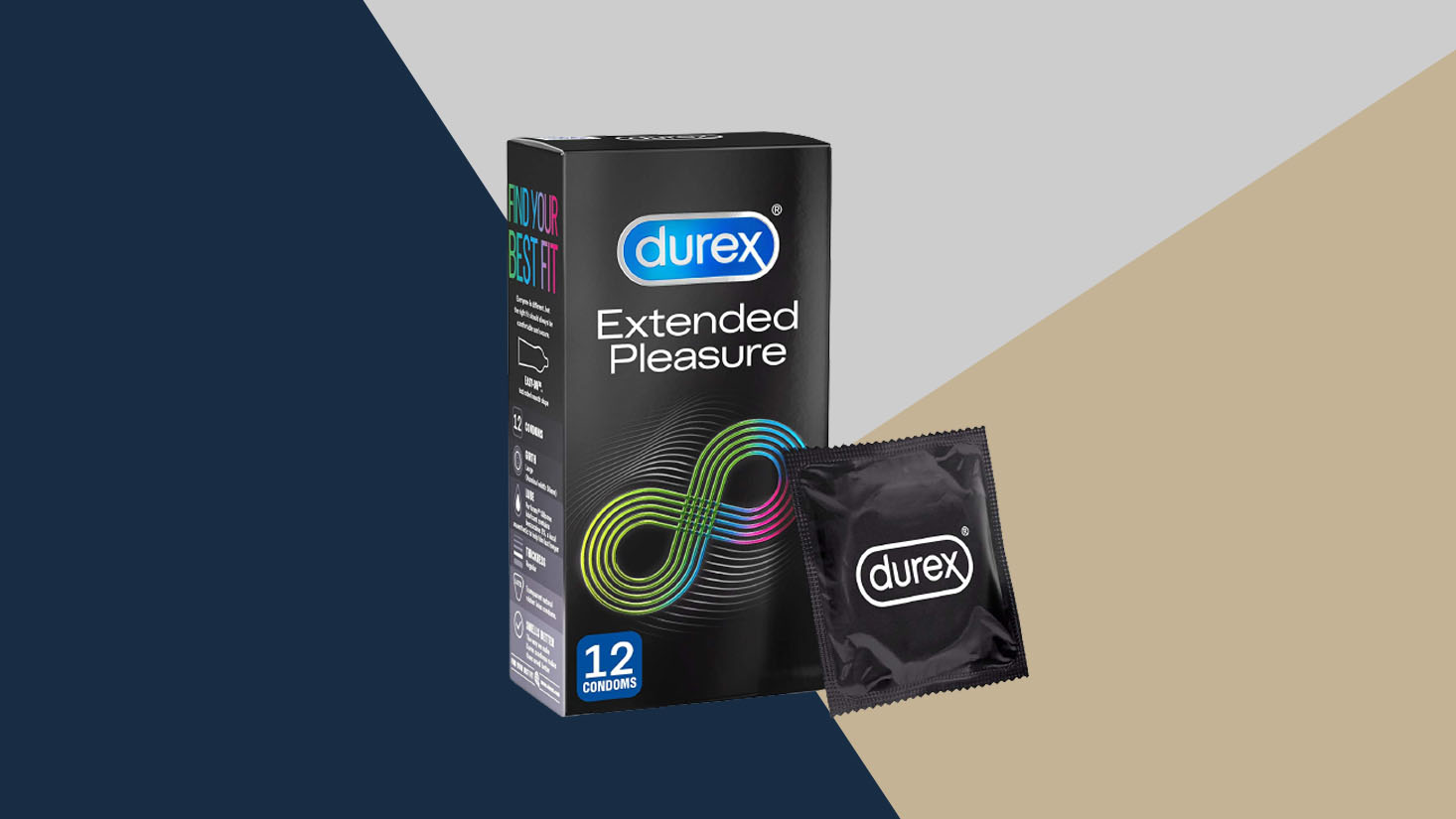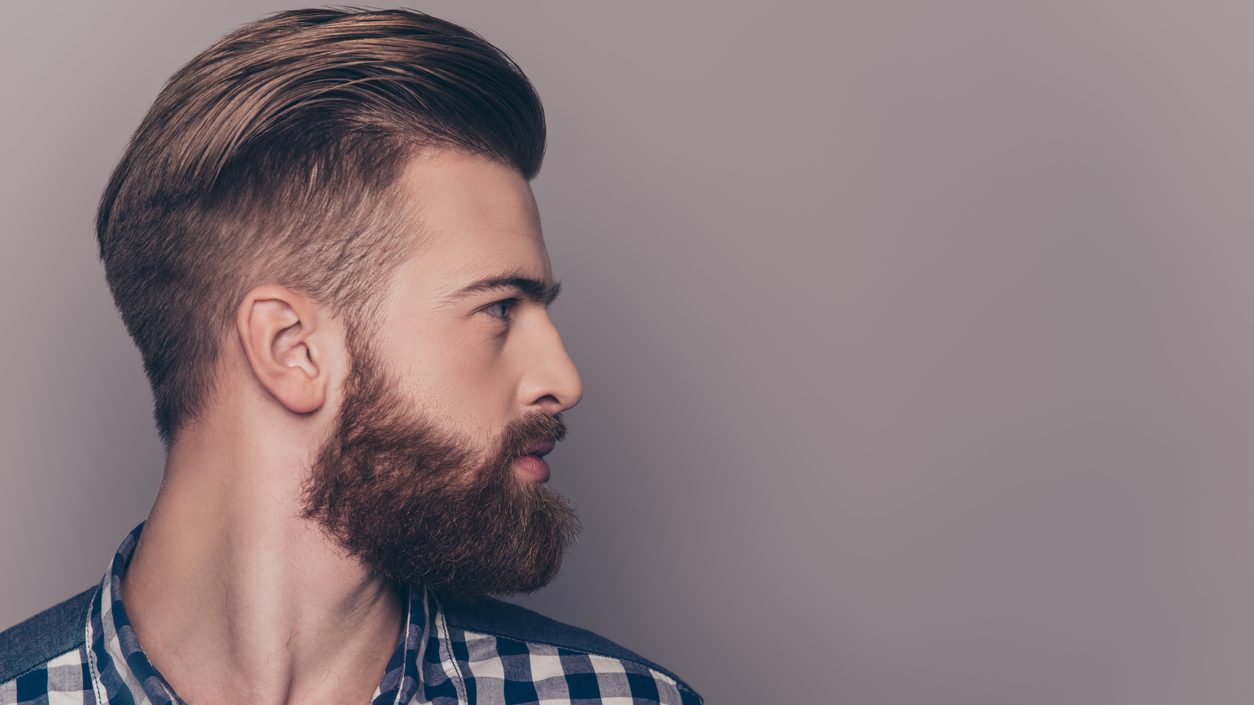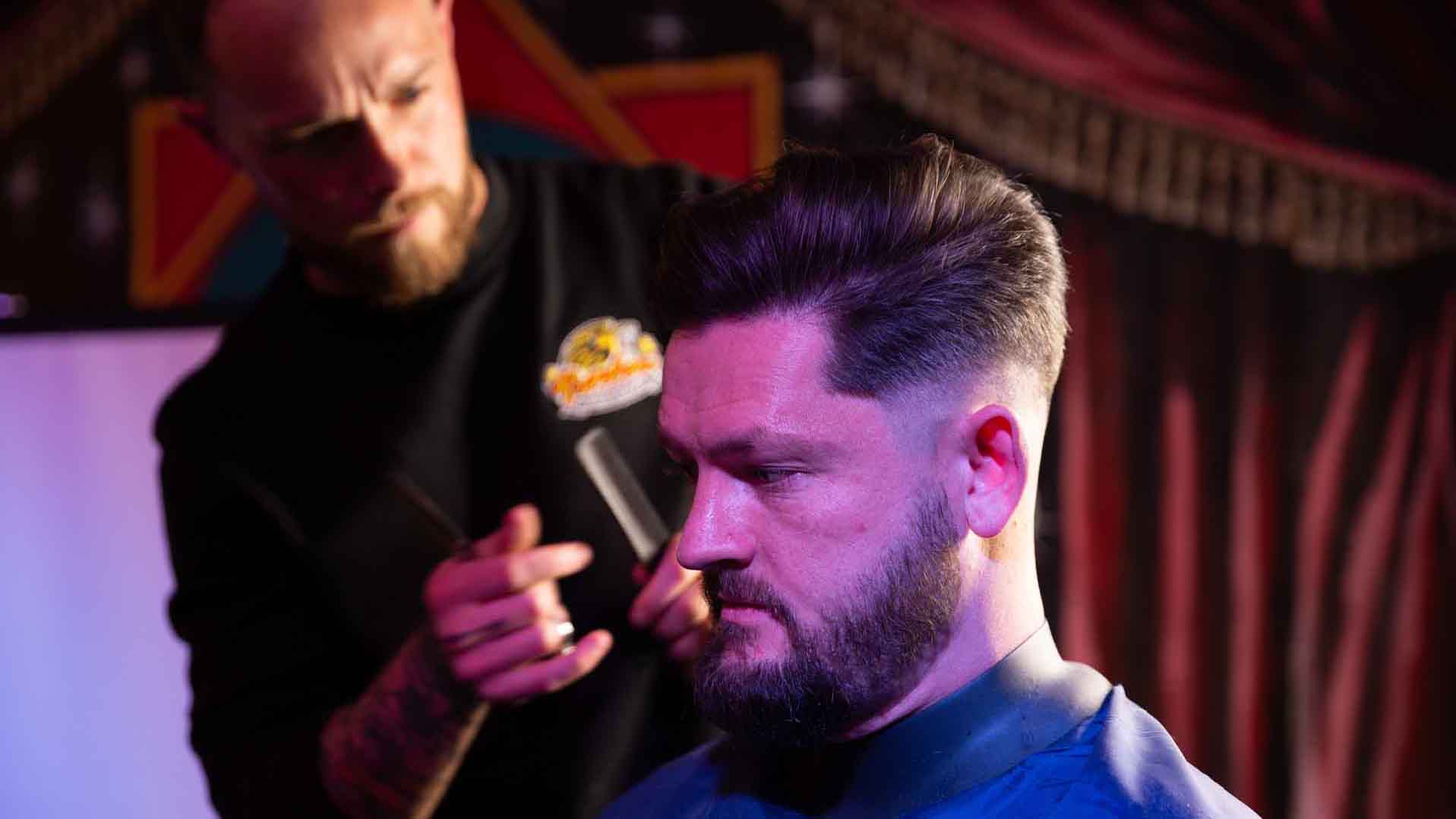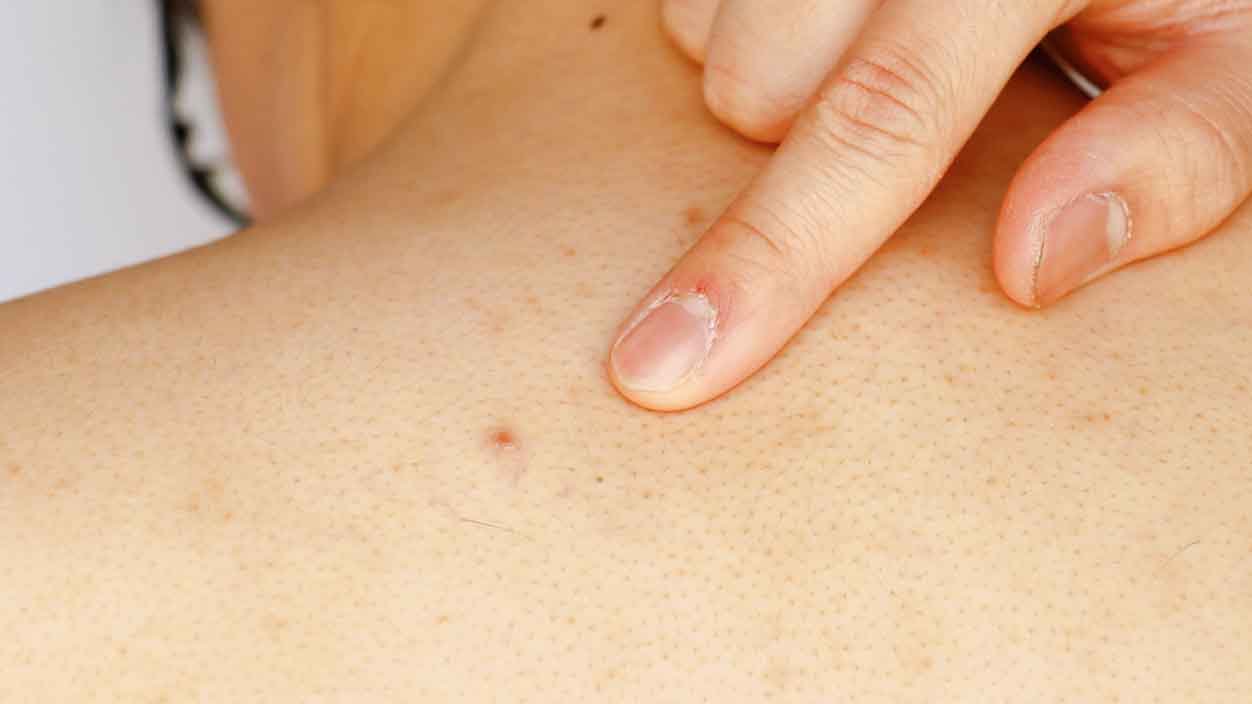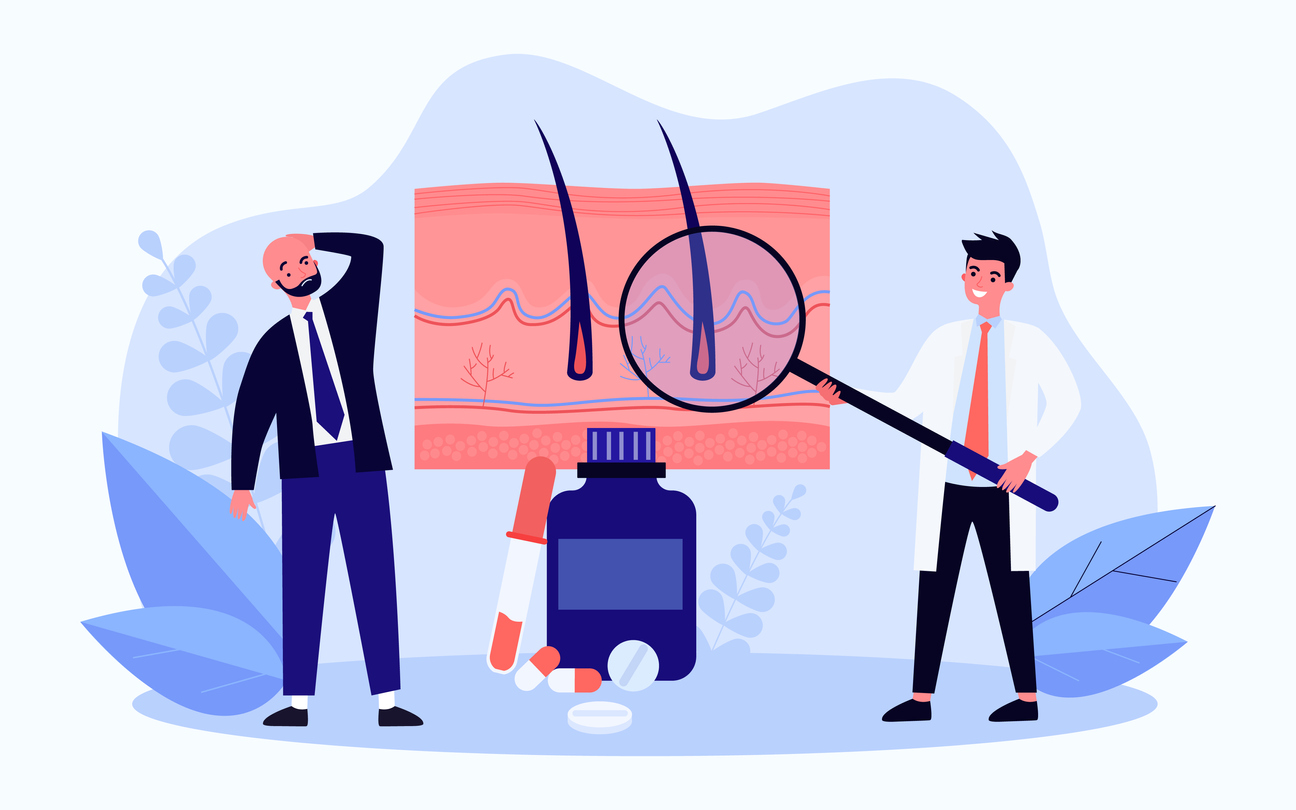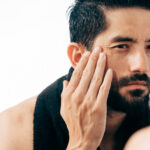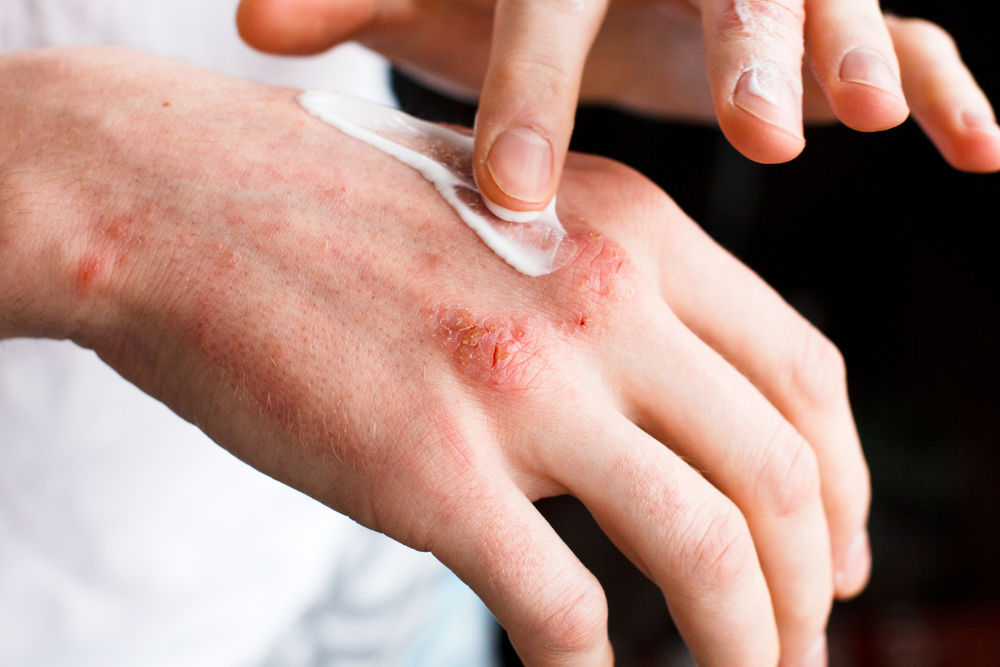
Psoriasis: What causes psoriasis and what does it look like?
We take a dive into what causes psoriasis, what it looks like and how to treat or manage the symptoms of the chronic skin condition
JUMP TO SECTION
Click the links below to jump to the relevant section:
What does psoriasis look like?
D espite the fact psoriasis affects around 2 in 100 people in the UK, it never seems to be given the same attention from skincare brands as other skin concerns, such as eczema or rosacea.
There are hundreds of products from dozens of brands aimed at helping dermatitis-related skin woes, but when it comes to the treatment of psoriasis, sufferers are largely left out
As a chronic autoimmune disease, psoriasis can start at any age and can last for years, if not the rest of your life. There isn’t currently a cure but there are a number of things you can do to make the condition and its symptoms easier to deal with.
Keep reading to learn more about psoriasis is, what it looks like, how to treat the symptoms as well as the best products for psoriasis that you can buy on the high street.
FURTHER READING: Dandruff: What is it, what causes it and how to get rid of dandruff for good
What is psoriasis?
According to the NHS, psoriasis is a skin condition that causes you to have a rash with flaky patches of skin which form scales.
It occurs when a person’s immune system incorrectly believes the body is being attacked and the skin is damaged, so sends signals to repair the area.
What causes psoriasis?
 NHS
NHS
In a healthy immune response, white blood cells called T cells help defend the body against harmful substances like bacteria and viruses. However, in people with psoriasis, these T cells become overactive and trigger inflammation, leading to the excessive growth of skin cells.
These skin cells are generated on top of what’s already there and this causes the skin to become thick, resulting in scaly patches known as plaques.
Depending on your skin tone these patches can appear pink, red, white, or silvery. If you have black skin the scales may look grey in colour. You’ll most likely find them on your elbows, scalp, knees, or lower back, but they can appear anywhere on your body.
The exact cause of psoriasis is not fully understood, but it is believed to be caused by a mixture of genetic, immune, and environmental factors.
For instance, it’s thought that obesity and stress can make psoriasis worse and cause flare-ups. Environmental factors can affect it too, such as your diet and whether you smoke or drink. Having a Vitamin D deficiency has also been linked with causing psoriasis flare-ups.
Psoriasis could potentially be triggered by an injury to your skin, using particular medicines, or having a throat infection, but there have not been definite links confirmed.
Although you can start getting symptoms of psoriasis at any age, it most likely develops when you’re between 20 and 30 years old, or between 50 and 60.
FURTHER READING: Is your skin dry or dehydrated? Here’s how to find out and what to do about it
What does psoriasis look like?
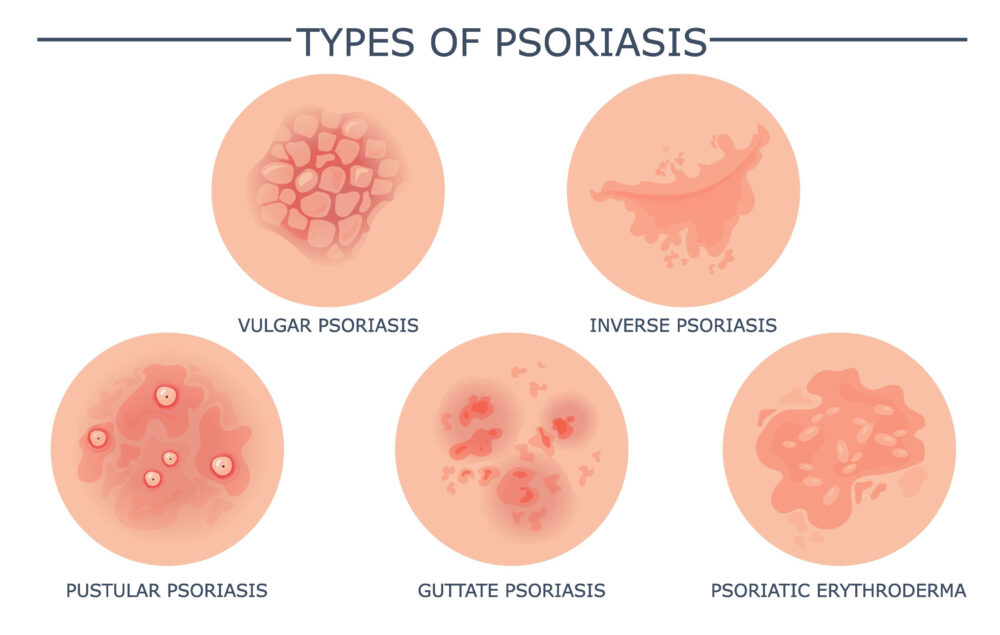 mamabella/Shutterstock
mamabella/Shutterstock
Symptoms of psoriasis include a patchy rash that ranges from spots of dandruff-like scaling to major eruptions across your body. It can also cause circular rashes to appear, particularly in areas that get particularly sweaty, such as around the groin.
Often these patches are manageable, but they can also cause the skin to crack and bleed, or in other cases, they can coincide with itching, burning, or soreness.
The most common type of psoriasis is called, ‘plaque psoriasis,’ but you can also suffer from:
- Nail psoriasis: This is where your psoriasis affects your fingernails and toenails. It can cause abnormal nail growth, discolouration and your psoriasis nails may loosen and separate from your nail bed (onycholysis)
- Scalp psoriasis: Scalp psoriasis is a specific form of psoriasis that affects the scalp and hairline. It is characterised by red, scaly patches on the scalp, which may be itchy, painful, or have a burning sensation. These patches can range in size from small spots to larger areas that cover a significant portion of the scalp.
- Inverse psoriasis: This type of psoriasis affects your skin folds, like under your boobs, around your groin, and bum. It causes smooth patches of inflamed skin that are made worse by friction and sweating.
- Pustular psoriasis: This is a rare type of psoriasis that shows up as pus-filled blisters and can be found in widespread patches or on small areas of the palms of your hands or soles of your feet
- Erythrodermic psoriasis: The least common type of psoriasis, erythrodermic psoriasis shows up as a peeling rash that can itch or burn and be all over your body. This type of psoriasis could last for only a short time, or become chronic and long-term.
- Guttate psoriasis: Guttate psoriasis is a type of psoriasis that affects young adults and children and is often triggered by bacterial infections.
- Psoriatic arthritis: Psoriatic arthritis is when psoriasis affects your insides as well as your outsides. As well as patches of flaky skin you may also have tenderness, pain, swelling, or burning in your joints.
The symptoms and severity of psoriasis vary from person to person. Some people find psoriasis to be a minor irritation, for others it can have a debilitating effect on their physical and mental health. What’s more, psoriasis tends to go through cycles where you get flare-ups for a few weeks or months and then it calms down for a while.
If you think you might have psoriasis then it’s worth seeing a GP to get a proper diagnosis. They can also discuss which type of psoriasis you have so you know which types of treatments you need.
Is psoriasis contagious?
No, psoriasis is not contagious because it’s an autoimmune disease. It is not caused by an infection or a contagious agent like bacteria or viruses.
This means it’s impossible to be transmitted from person to person through direct contact, touching, or sharing personal items.
While psoriasis itself is not contagious, due to its genetic causes, it can be passed down to children. Also, if you already have psoriasis it can spread to other parts of your body but that doesn’t mean it’s contagious to others.
Psoriasis vs eczema
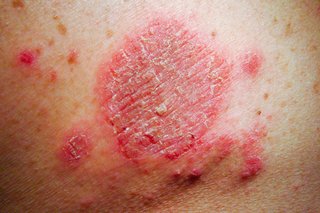 NHS
NHS
Eczema and psoriasis are very different skin conditions but are often mistaken for one another because they have similar symptoms.
Although both eczema and psoriasis are thought to be caused by an immune system that goes into overdrive and mistakenly attacks your own body, in psoriasis the overproduction of certain immune-system chemicals causes the outer layer of skin cells to go through their life cycle in days rather than weeks, as they should do.
With eczema, the immune system affects the skin’s ability to protect itself against outside irritants and allergens.
Eczema rashes can be scaly, oozing, or crusty, but a psoriasis rash is scalier and more raised, and the skin is thicker and more inflamed.
With both skin conditions, the skin may burn or feel very itchy, however, if you suffer from psoriasis you may find you have more soreness or pain, whereas eczema can be more itchy.
Eczema will often appear on parts of your body that bend, like your elbow, behind your knees, and on your wrists and ankles. Psoriasis appears in similar locations as well as on your scalp, face, and lower back.
Eczema often first appears when you’re a child and although still possible, is less common in adults. Psoriasis usually shows up later in your twenties, or a second burst around the age of 60.
When it comes to treating eczema and psoriasis the options often overlap and you’ll find a lot of products can help relieve the symptoms of both skin conditions.
What is the best treatment for psoriasis?
Because psoriasis is thought to be genetic, or a chronic condition that affects your immune system, it’s not possible to cure psoriasis permanently.
However, there are psoriasis treatments that help to improve your symptoms and reduce your psoriasis flare-ups.
Diet
 Getty Images/iStockphoto
Getty Images/iStockphoto If you’re wanting to reduce psoriasis flare-ups, it’s good to start by looking at your diet. This is because while certain foods don’t cause psoriasis, once you have it they can make it worse.
An American study found that reducing your alcohol, gluten, and foods from the so-called nightshade family. This is a family of plants that includes tomatoes, aubergines, potatoes, and peppers. Tobacco is also in the nightshade family.
Sleep
Following that you’re going to want to manage your stress levels and get enough sleep to decrease your psoriasis flare-ups. Cortisol, the stress hormone, can make inflammation in the body worse generally so if you’re already inflamed, this can add to your woes.
It’s easier said than done but taking up pilates or yoga as well as swimming can help increase endorphins and reduce cortisol.
Skincare
Keeping your skin moisturised is important when it comes to reducing the impact of psoriasis. As well as avoiding overly hot showers (which can dry out your skin), look for an unscented lotion with a hydrating formula that can help soothe and soften your dry, flaky patches, but also help lock in moisture.
When it comes to the best skincare products for psoriasis you’ll want to look for ingredients such as glycerin, petrolatum, shea butter, and ceramides because they’ll prevent further water loss from your skin’s surface, as well as soothe your patches of dry skin.
Our sister site mamabella has spent the past year testing more than a hundred moisturisers and you can find the full ranking, including how hydrating each of them is, in our best moisturiser list and skincare spreadsheet.
Best skincare for psoriasis
- CeraVe Hydrating Cleanser with Hyaluronic Acid
- E45 Body Wash Shower Cream
- Curél Hydra Therapy Wet Skin Moisturiser
- Graham’s Natural Skin Psoriasis Cream
CeraVe Moisturising Cream
£11.50 | Buy now
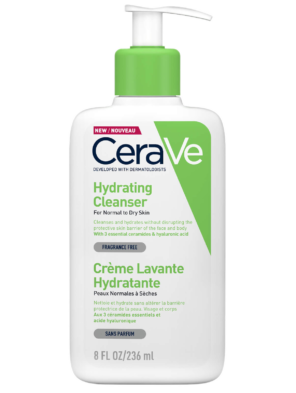 CeraVe
CeraVe
Why we love it: CeraVe is such a great skincare brand generally, but it’s particularly great for people with skin conditions or a damaged skin barrier due to its reliance on ceramides.
The CeraVe Hydrating Cleanser with Hyaluronic Acid is no exception.
It’s a gentle and effective cleanser that gets rid of dirt, oil, and impurities without drying out the skin.
The key ingredient in this cleanser is hyaluronic acid.
Hyaluronic acid is what’s known as a humectant which means it acts as a magnet for water and helps to attract and retain moisture in the skin.
This cleanser is also enriched with a unique blend of ceramides, which are essential lipids naturally found in the skin.
Ceramides help to strengthen the skin’s protective barrier, promoting moisture retention and preventing moisture loss.
It’s free of harsh foaming agents and fragrance, making it suitable for sensitive skin and, as a result, it can be used every day.
Read the full CeraVe Hydrating Cleanser review here
E45 Emollient Shower Cream
£5.89 | Buy now
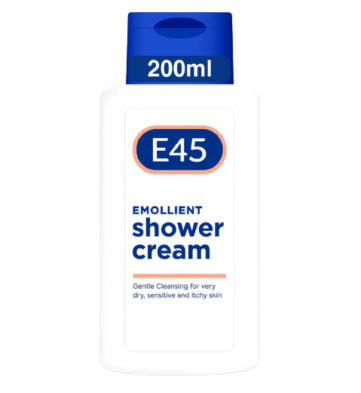 E45
E45
Why we love it: The E45 Body Wash Shower Cream is a nourishing and moisturising body cleanser specifically designed to care for dry and sensitive skin because it’s soap-free and pH balanced.
This means it cleanses the skin without stripping away the skin’s natural oils, which can be especially beneficial for people whose skin becomes easily irritated.
The formula is full of emollients, including liquid paraffin, glycerin, and lanolin, and all of these work together to help replenish and lock in moisture.
They’re also great at creating a protective barrier on the skin.
The E45 Body Wash Shower Cream has a mild scent and is gentle enough to use every day.
As psoriasis treatments go, this is super affordable and surprisingly luxurious given its cheap price plus, at 200ml, you can cover your whole body without worrying about money down the drain!
Curél Hydra Therapy Wet Skin Moisturiser
From £15 | Buy now
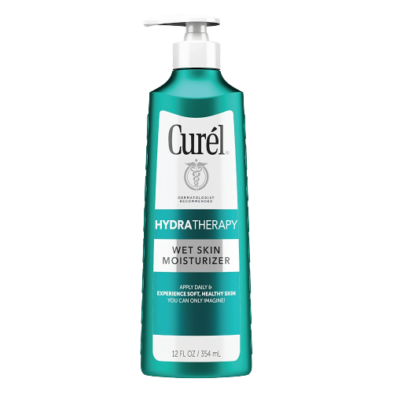 Curel
Curel Why we love it: The Curél Hydra Therapy Wet Skin Moisturiser doesn’t come cheap in the UK (mainly because it’s an international brand) but if you’re suffering from a particularly bad flare-up or you have dry skin that’s cracked and bleeding, it provides a little extra than cheaper products.
As the name suggests, this moisturiser is designed to be applied directly onto wet skin, immediately after showering or bathing, for maximum effect.
This is because it contains what Curél calls “advanced water-activated technology”.
This includes a blend of ceramides that helps to restore and reinforce the skin’s natural barrier function which makes the skin more resilient, better able to retain moisture, and less prone to and irritation.
When applied to wet skin, this cream blends with the water droplets on the skin’s surface, forming a protective barrier that seals in moisture.
This makes sure it offers deep hydration and helps to prevent water loss, leaving the skin feeling soft, smooth, and supple.
Unlike some other creams for psoriasis and similar dry skin conditions, this moisturiser is lightweight and absorbs quickly into the skin, without any residue or sticky feeling.
With regular use, Curél Hydra Therapy can help improve the overall condition and texture of the skin, addressing dryness, roughness, and tightness.
Graham’s Natural Skin Psoriasis Cream
£13 | Buy now
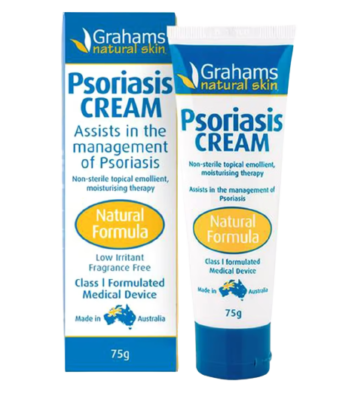 Graham's Natural Skin
Graham's Natural Skin
Why we love it: If you want a cream that’s specifically designed for psoriasis, but which is still semi-affordable, we recommend Graham’s Natural Skin Psoriasis Cream.
The cream has been formulated with a blend of natural and soothing ingredients, carefully chosen to help calm and nourish the skin affected by psoriasis.
One of its key ingredients is a high concentration of organic manuka honey.
Manuka honey is known for its antibacterial and anti-inflammatory properties, which can help soothe irritated skin and reduce redness and inflammation associated with psoriasis.
The honey acts as a gentle moisturiser, helping to restore moisture to dry and flaky areas, leaving the skin feeling hydrated.
This psoriasis cream also incorporates the benefits of calendula extract, a botanical ingredient known for its soothing and healing properties. Calendula extract helps to alleviate itchiness and irritation, providing relief to the discomfort often experienced by individuals with psoriasis.
Elsewhere, it contains avocado oil and coconut oil, both of which help to replenish the skin’s natural barrier, locking in moisture and preventing dryness, leaving the skin feeling soft and supple.
It’s then free from harsh chemicals, steroids, and fragrances, making it suitable for sensitive skin.
MORE LIKE THIS






